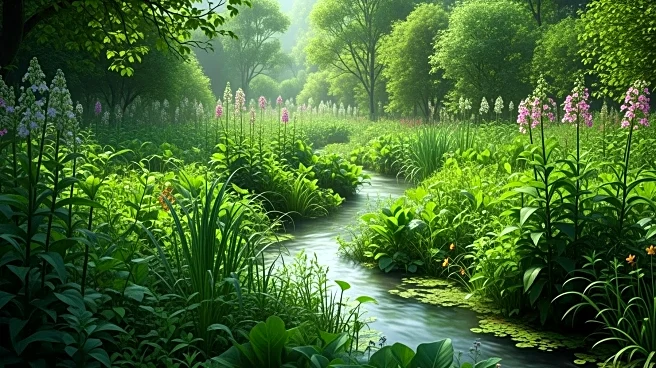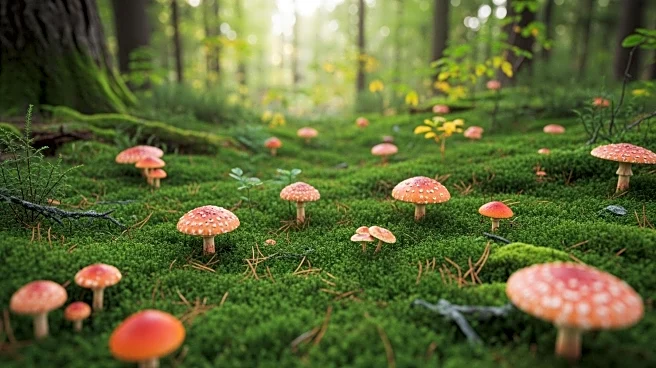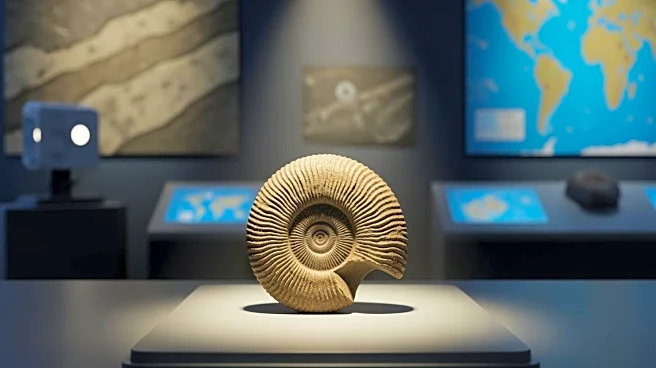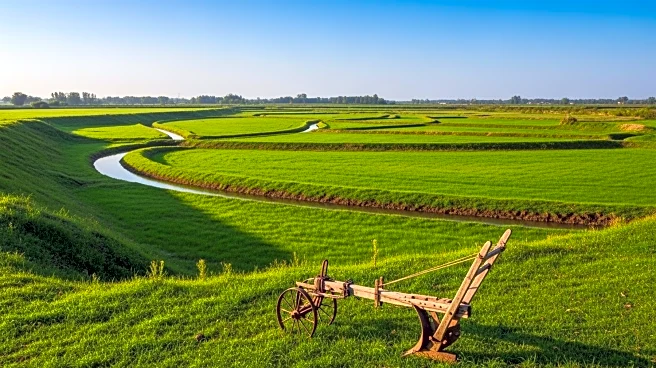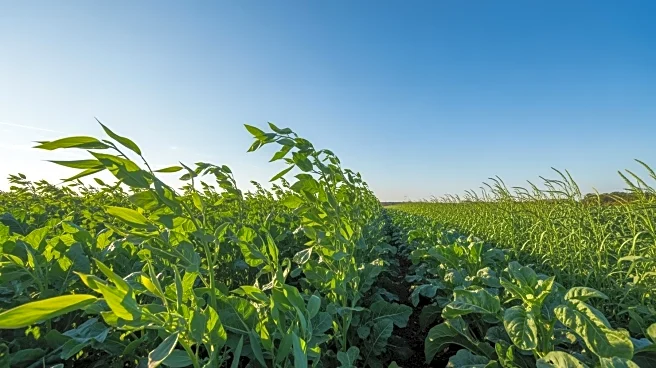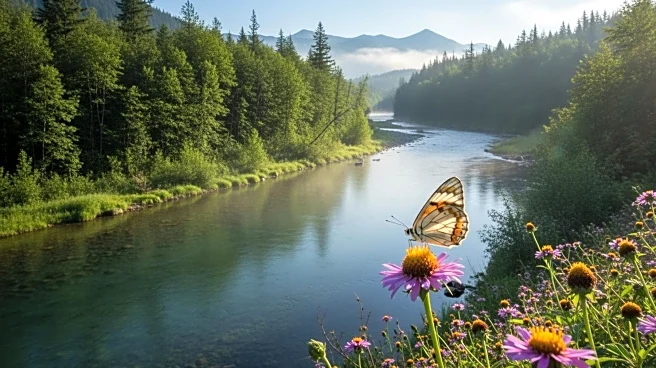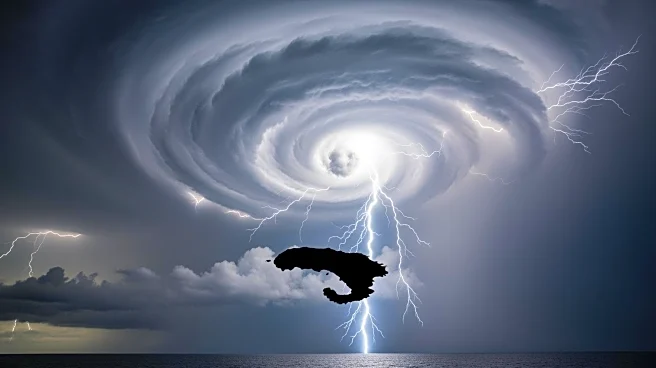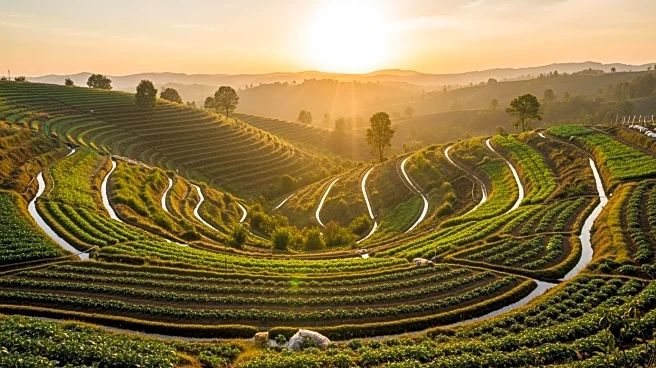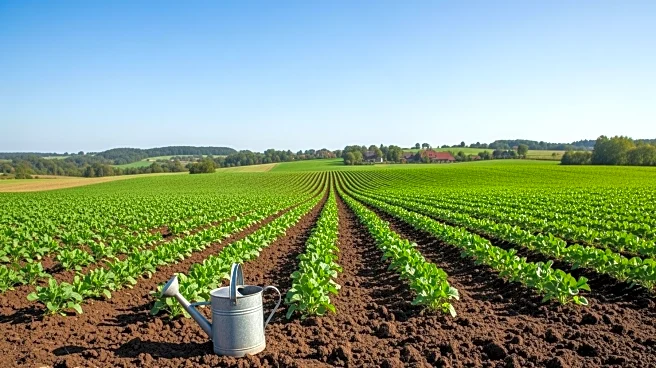What's Happening?
Peatlands, which are diverse ecosystems ranging from boreal bogs to tropical peat swamp forests, are crucial for carbon sequestration, storing an estimated one-third of the planet's soil carbon. These
environments are characterized by harsh conditions, including acidic, nutrient-poor waters. Despite their ecological importance, peatlands are under threat from human activities such as drainage, clearing, and climate change. These activities degrade peatlands, impacting their ability to sequester carbon and support unique biodiversity. The research highlights the need for conservation efforts to protect these vital ecosystems.
Why It's Important?
Peatlands play a critical role in global carbon storage and biodiversity. Their degradation not only threatens unique species adapted to these environments but also contributes to increased greenhouse gas emissions. Protecting peatlands is essential for maintaining biodiversity and mitigating climate change. The research underscores the importance of understanding the ecological functions of peatlands and the need for policies that support their conservation. As peatlands are increasingly recognized for their environmental value, efforts to preserve them could have significant implications for global climate strategies.
Beyond the Headlines
The degradation of peatlands raises ethical and environmental concerns, as these ecosystems are often home to rare and endangered species. The loss of peatlands could lead to irreversible changes in biodiversity and ecosystem services. Additionally, the cultural significance of peatlands to indigenous communities and their role in traditional land management practices highlight the need for inclusive conservation strategies. Long-term, the protection and restoration of peatlands could contribute to sustainable development goals and enhance resilience to climate change.
